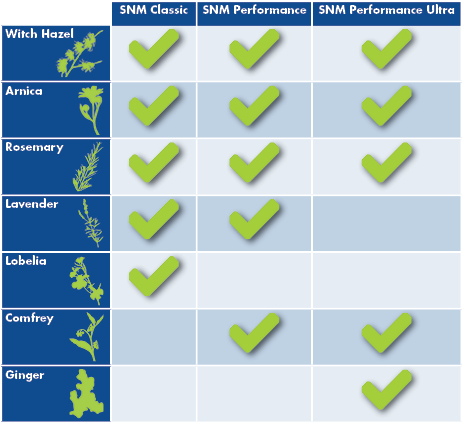
Why is my liniment banned from competition?
As riders, we want the best for our horses. Herbal supplements and topical products are commonplace in the equine world but, as the options expand and as regulatory bodies crack down, it is important to know why certain ingredients are singled out. FEI is arguably the largest equine regulatory body in the world and Arenus strives to work within their regulations to provide options for our most popular products to competitors. 
That said, it is important to read labels clearly, consult with your veterinarian or competition representative and have an understanding of why certain herbs are used and may be banned. Herbs are not a one-size-fits-all approach to supplementation and should be carefully selected to work with your horse's nutritional needs as well as your competition goals.
For associations like the FEI and USEF, it is important to understand that if an ingredient can alter something about your animal, it will be investigated. For example, 20 years ago probiotics were investigated to determine whether they enhanced eating capacity. Obviously, they were not found to be performance enhancing as digestive aids are now a staple among the competitive community. Similar protocols have taken place for many ingredients over the years which has resulted in a unique list of banned substances for each association.
Equine liniments often make use of capsaicin and menthol in their formulations. These ingredients are strictly banned by both the FEI and USEF. In addition, lavender and lobelia are found in a number of equine liniments and were recently added to the no tolerance lists.
To further understand why these ingredients are banned, let's explore each individually:
CAYENNE (Capsicum annuum)
Cayenne is also known to us as Capsaicin, which is actually one of its isolated constituents/ingredients in the pepper fruit. When used internally, it can help increase circulation, strengthen the integrity of the heart, arteries and veins, stimulate appetite and break up congestion. Topically, it is used to help stop wounds from bleeding, with a simple cauterizing effect that is gentle on raw skin. It is used in liniments and lotions for rheumatism, sore joints, and to relieve inflammation and pain. The way it works to reduce pain is by causing exhaustion to the sensory nerves that communicate to the brain. It will irritate and stimulate the nerve endings in such a rapid firing fashion that the nerves get exhausted and are no longer able to send the messages to the brain that the nerve has been compromised. It is for this reason that the herb is not allowed for use during competition.
PEPPERMINT (Mentha pipertita)
Peppermint (a.k.a. menthol) can be interchanged with Spearmint in most cases. Their flavors are are different so we have the choice as to which one our palette prefers. Both herbs offer a very refreshing taste. It is most often used internally for soothing stomach issues, and for calming the nerves since it is classified as a nervine tonic herb. The menthol in peppermint is also known to have an analgesic action on the throat when used to help suppress coughing. Topically it used to reduce pain which might be the reason it is not allowed for use during competition.
LAVENDER (Lavendula angustifolia)
Lavender is one of the most known herbs due to its fragrance and popularity as an essential oil to have on hand for aiding in relaxation, relief from headaches and tension and anxiety. It is classified as a nerve tonic when used internally. Most horse people will use it topically since it is often in liniments and lotions currently on the market. It is however, not allowed to be used during USEF competition levels due to its anti-inflammatory and mild analgesic properties on the skin. If you are not competing and are able to use lavender, it is a delightful plant to be able to enjoy and have your horses reap the benefits of.
LOBELIA (Lobelia inflata)
Lobelia is a genus which contains a substantial number of subspecies which have been used for many centuries to treat a variety of ailments. Most notably, when used internally, Lobelia is credited with regulating asthmatic conditions due to anti-inflammatory qualities. While equine liniments use it topically for this purpose, it is because of the respiratory enhancements that this herb is banned by the FEI and USEF.
As always, Sore No-More remains capsaicin and menthol free as they can cause irritation on sensitive horses. The Sore No-More liniments offer a variety of options for equine competitors that work within the confines of FEI competition as well as for the backyard or recreational rider. The graphic below provides information on the difference in the Sore No-More lines so you can best choose the right products for you.
Today there are many qualified practitioners and equine nutritionists that can help you select the right herbal products for your horse. Additionally, there are many quality reference books on the market. The latest and most up to date book for horses is Equine Herbal and Energetics by Stacey Small (creator of the Sore No-More product line) and Andrea Baldwin. This book details each herb, providing reasons for use, chemical constituents, contraindications as well as general knowledge about the plant itself.
Herbal products can be a very safe and helpful addition to your horse's daily regimen but, given the regulatory boundaries for competitors, it is important to make informed choices. Follow the links below to the current regulatory lists:


